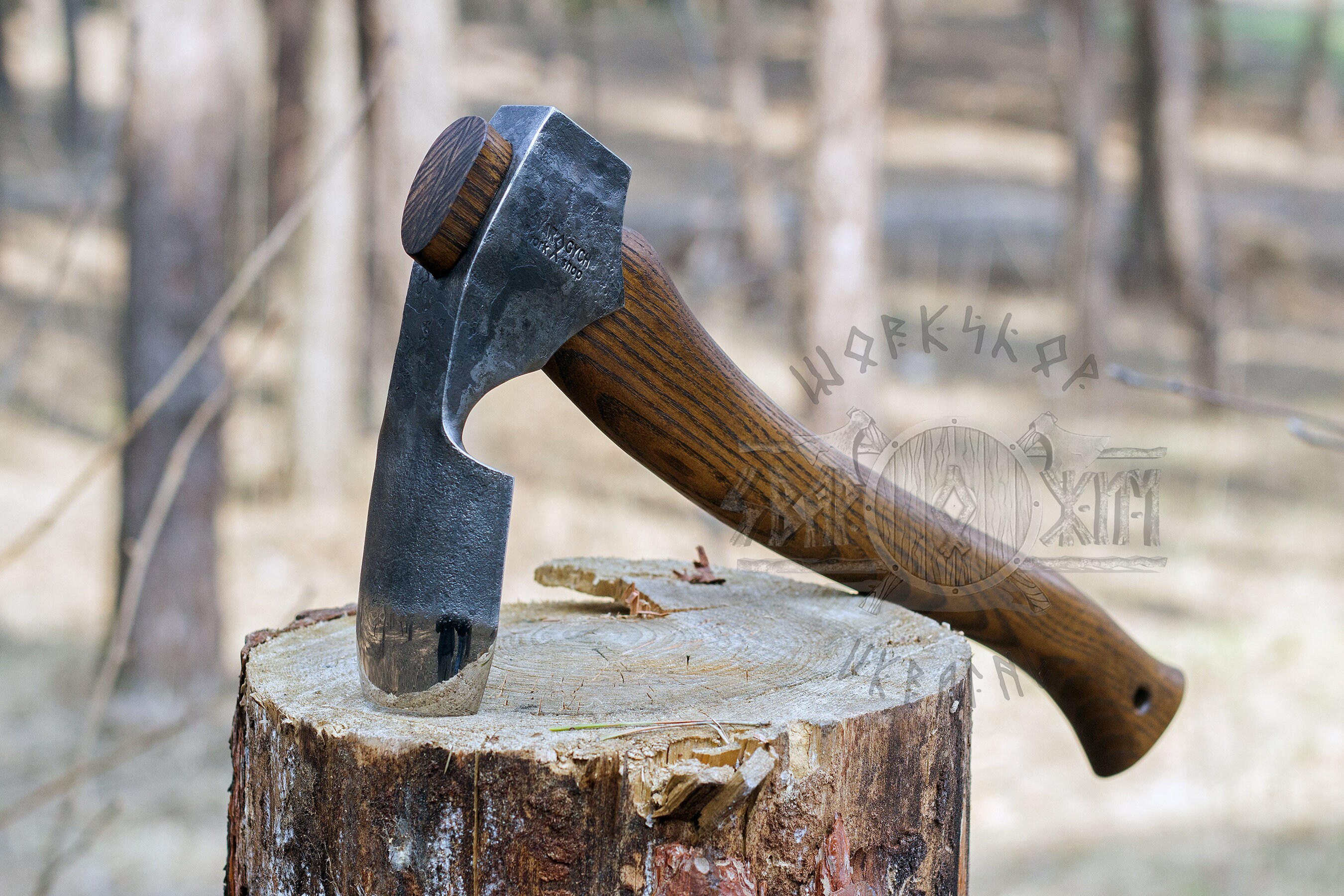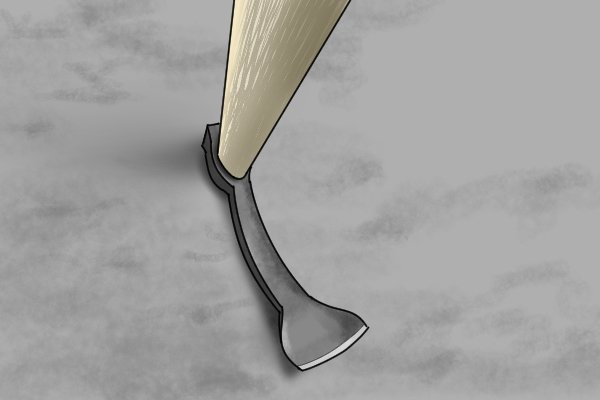
The handle is made from hard wood such as alder, yew, maple, etc. It can be attached with screws, bolts, or lashed with seine twine, or any combination thereof. The blade is around an inch and a half wide at the handle, but can be wider at the cutting edge and can protrude from the handle no more than an inch and a half. Unlike using the elbow adze, the wrist is kept stiff and all the action is from the carver’s elbow. The blade is fashioned from an axe blade with most of the bevel on the bottom and with a slight micro bevel on the top. This type of adze is used for rough carving and texture adzing. The blade can be attached and fastened with bolts, glued and wrapped with seine twine, or held on with a hose clamp (not a bad idea when one is unfamiliar with the use of this type of tool as the blade can be adjusted for best results). The handle should be gripped firmly with the thumb on top, keeping the wrist loose. The angle of the blade to the carver’s index finger should be 90 degrees, as in the Shaping Adze.

The bevel is on the outside of the blade, which is also about five to six inches long and like the shaping adze blade there is a five degree micro bevel on the opposite side.Ī good handle length is around twelve inches. The handle is thinned down to allow some spring when a stroke is made. Alder is not the best for this adze type, but rather yew, or maple. The handle is made from the natural crook of a tree. This type of adze is for doing fine surface texture as aesthetic feature. This becomes apparent when using the elbow adze in the proper manner, which calls for the carver’s elbow to be held against the side of the body, with the action being all in the wrist. The angle of the blade to the carver’s index finger of 90 degrees is very important. The blade is five to six inches long and can be attached with bolts, or glued with epoxy and wrapped with seine twine.Ī good length for the handle is twelve inches.


The outside face has a five degree micro bevel at the cutting edge and acts as reinforcement when the blade hits the material to be carved. Western red alder seems to have the ideal angle compared to other tree species and the more abundant good handles per tree.


 0 kommentar(er)
0 kommentar(er)
